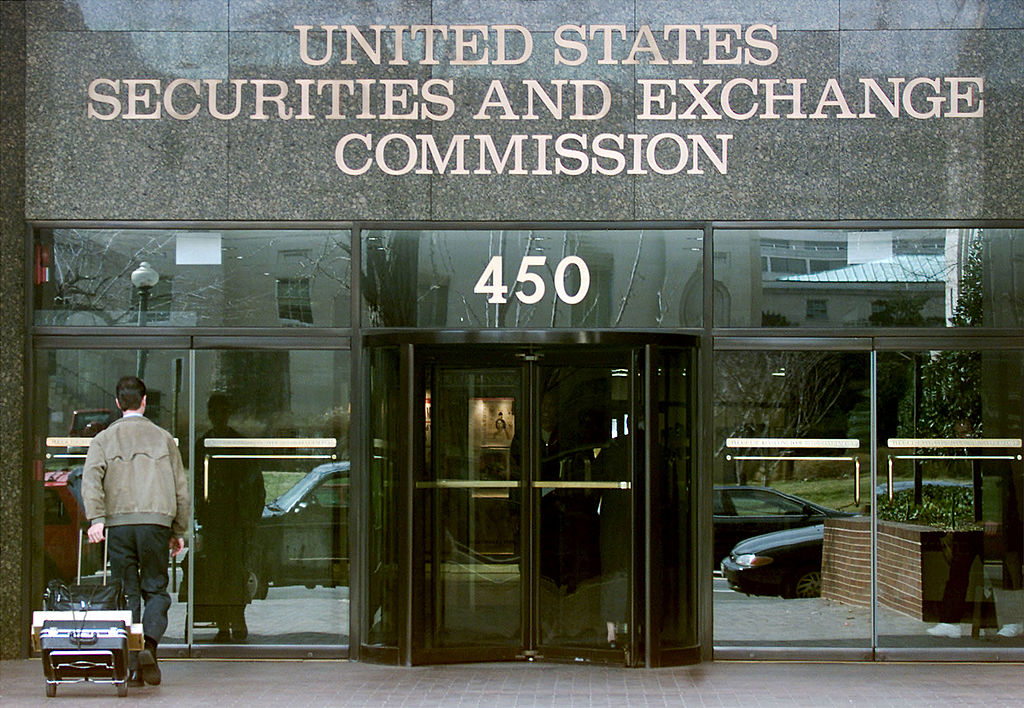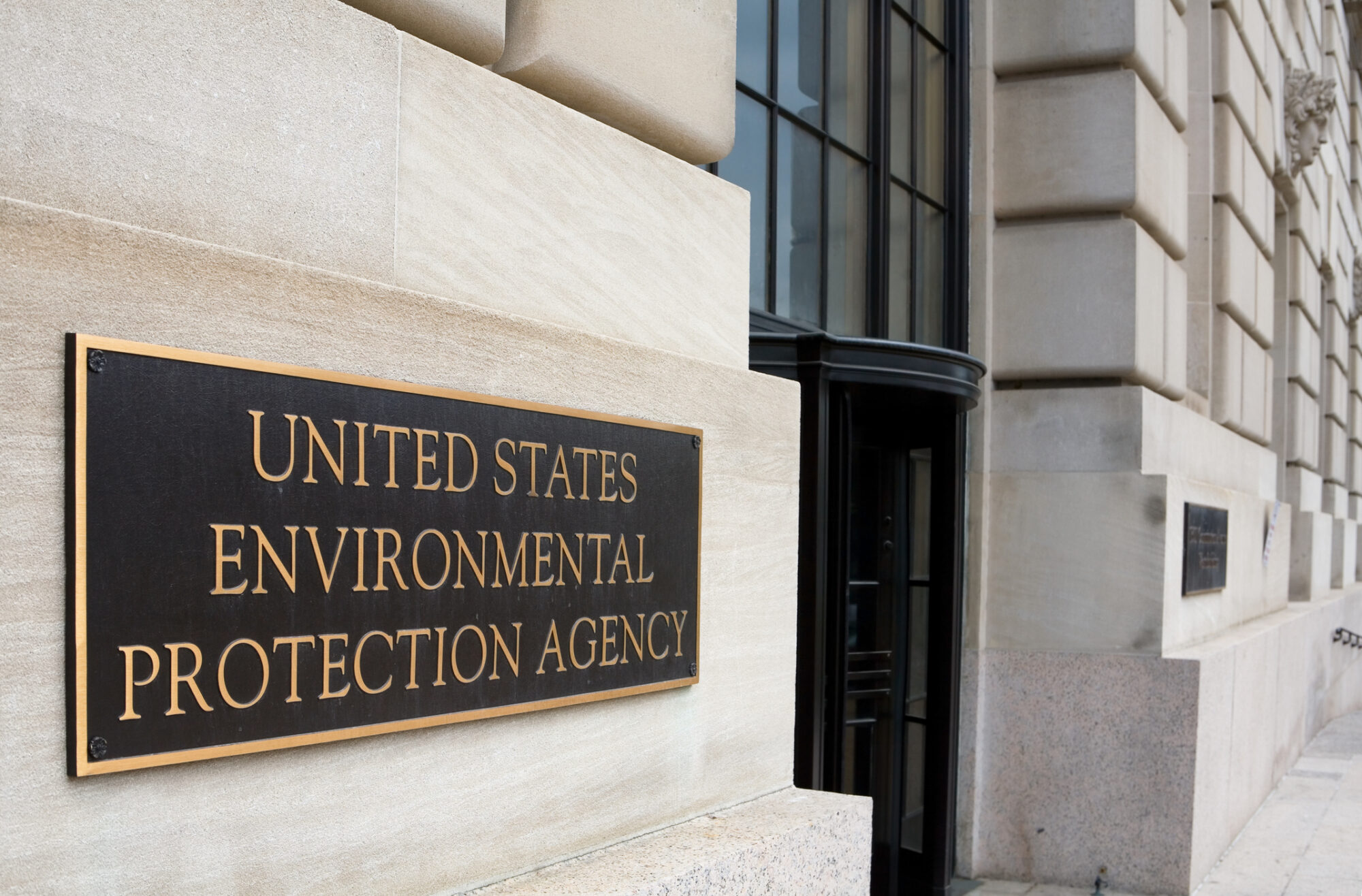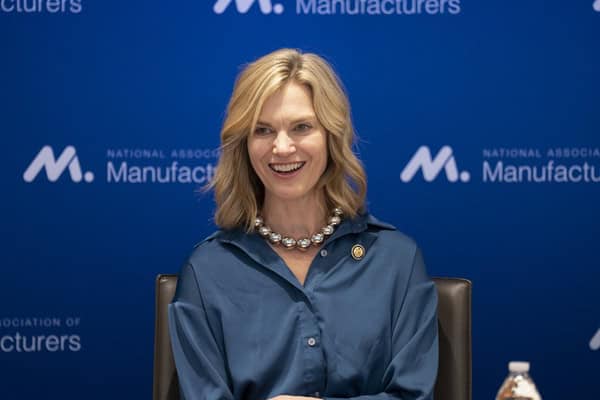Manufacturers on the Hill Urge Action on Tax Reform Permanency

Shop floor manufacturers and NAM staff met with members of Congress yesterday and continue these meetings today on Capitol Hill to hammer home the importance of making the 2017 tax reforms permanent and getting a comprehensive reconciliation bill done now. House and Senate Republicans are working on a strategy for a tax package as part of a reconciliation bill that includes extending the 2017 Tax Cuts and Jobs Act.
- In its Morning Tax newsletter, POLITICO (subscription) reported on this week’s fly-in, naming the NAM “a powerhouse business lobby” meeting with several members of Congress as the 2025 tax bill continues to “get more intense.”
Why this is a critical moment: When the 2017 tax cuts were signed into law, “it was rocket fuel for manufacturing in America and made the U.S. economy more competitive on a global scale,” said NAM President and CEO Jay Timmons earlier this month.
- “That fuel is about to run out as key provisions have expired, and others are about to lapse. … We must ensure these historic, pro-growth manufacturing provisions are made permanent and even more competitive so manufacturers can plan, grow and succeed.”
“Exactly what the country needed”: Manufacturers traveled hundreds of miles from their shop floors to urge Congress to keep the rocket fuel for manufacturers and the American economy.
- “The Tax Cuts and Jobs Act of 2017 was huge for us,” said Tom Onsrud, CEO of the 51-year-old industrial CNC machine maker C.R. Onsrud, Inc., in Troutman, North Carolina. “It was rocket fuel. As soon as it passed, our backlog exploded. We started employing more people. We went from about 100 people to 220 people. Our floor space was maxed out. … It was exactly what the country needed.”
- One of the provisions, the immediate research and development tax credit, allowed the family-owned business to “expense equipment [costs] quickly,” Onsrud added. “That was huge for us.” That provision, however, expired in 2022.
“Vital to our company”: Stephen Bullock, president of concrete paving equipment manufacturer Power Curbers in Salisbury, North Carolina, is in Washington this week to make sure Congress knows just how important the tax reform measures have been to his small company.
- “We rely on them,” Bullock said. “We spend a lot of time and resources and money in research and development. Without [the tax provisions], it would be impossible for our company to support manufacturing. We’ve got to stay ahead of the game with new machinery, new offerings for our customers. So … anything we can do to realize those tax advantages sooner rather than later helps us very much from a cash-flow standpoint.”
- The TCJA “allowed us to expand and hire additional staff so that we [could] fund new programs, new machinery.”
“Tripled our business”: Steve Macias, co-owner of machining company Pivot Manufacturing, traveled from even farther away—Phoenix, Arizona—to make sure Congress heard what he had to say.
- “The tax reforms of 2017 … allowed us to grow our company in a way that we hadn’t [been able to] previously,” Macias told the NAM. “We were a small machine shop that did prototype and R&D work, and we’d been in business for 17 years. The tax cuts kind of gave us the kick … to take a leap and buy some production equipment, which has allowed us to virtually triple our business over the last eight years.”
- “Legislators need to understand the impact of tax reform,” Macias went on. “I’m a machine shop in Phoenix, Arizona, and there are hundreds of machine shops across the U.S., but there are also thousands upon tens of thousands of small manufacturing companies that made the same decisions we did based on those tax policies.”
Critical Minerals Executive Order Strengthens U.S. Manufacturing

President Trump’s recent executive order to accelerate permitting and access to domestic critical minerals will help manufacturing—and America—win, NAM President and CEO Jay Timmons said.
What’s going on: The recent executive order aims to boost U.S. production of critical minerals—which include lithium and cobalt—“as well as uranium, copper, potash, gold and any other element, compound or material as determined by the Chair of the National Energy Dominance Council,” according to the EO.
- China dominates the global market for critical minerals, which are vital in the manufacture of everyday goods from cell phones and computers to advanced energy and defense technologies.
- Increasing American production of these crucial substances “can create jobs, fuel prosperity and significantly reduce our reliance on foreign nations,” according to the EO. “Transportation, infrastructure, defense capabilities and the next generation of technology rely upon a secure, predictable and affordable supply of minerals.”
What’s in it: The EO—which cites “overbearing federal regulation” for the lack of American critical mineral production—enumerates “staggered timelines for agencies across government to prioritize financing for domestic mineral projects, including loans, capital and technical assistance, and calls on the Department of Defense to accelerate domestic mineral production” (POLITICO Pro’s GREENWIRE).
- It also calls on the DOD to work with the U.S. International Development Finance Corporation to offer financing for the projects.
Aligned on regulations: The NAM has long called for regulatory reform to combat the onslaught of rules coming from the federal government—and this EO is a much-needed reform, said Timmons.
- “For too long, red tape and burdensome regulations have stood in the way of the basic building blocks that power manufacturing in the United States, especially mining and processing the minerals manufacturers rely on to create jobs and dominate on the world stage,” Timmons said. “The administration is addressing those barriers, making it easier for manufacturers to access the resources we need to build the future in America.”
President’s Executive Order Strengthens U.S. Manufacturing by Accelerating Permitting and Unlocking Critical Resources
Washington, D.C. – Following President Donald Trump’s executive order to accelerate permitting and expand access to critical resources for manufacturing, National Association of Manufacturers President and CEO Jay Timmons released the following statement:
“For too long, red tape and burdensome regulations have stood in the way of the basic building blocks that power manufacturing in the United States, especially mining and processing the minerals manufacturers rely on to create jobs and dominate on the world stage. The administration is addressing those barriers, making it easier for manufacturers to access the resources we need to build the future in America.
“The NAM and our members will continue to serve as a resource to the Trump administration as it takes action to secure America’s supply chains and reduce reliance on countries like China when we have resources right here at home.
“A comprehensive manufacturing strategy—one that cements America’s position as the manufacturing superpower—depends on smart permitting reforms like the ones the administration is advancing. When manufacturers in the United States can invest with certainty, they plan, hire and win—and when manufacturers win, America wins.
“The NAM has long championed expediting the permitting process as a key pillar of our competitiveness agenda. When President Trump spoke at our September 2024 board meeting, he promised to deliver on this priority, and he has kept his promise. We look forward to continuing to work with his National Energy Dominance Council, under the leadership of Secretary of the Interior Doug Burgum and Secretary of Energy Chris Wright, to Make America Great for Manufacturing Again.”
-NAM-
The National Association of Manufacturers is the largest manufacturing association in the United States, representing small and large manufacturers in every industrial sector and in all 50 states. Manufacturing employs nearly 13 million men and women, contributes $2.93 trillion to the U.S. economy annually and accounts for 53% of private-sector research and development. The NAM is the powerful voice of the manufacturing community and the leading advocate for a policy agenda that helps manufacturers compete in the global economy and create jobs across the United States. For more information about the NAM or to follow us on Twitter and Facebook, please visit www.nam.org.
Light-Touch AI Regulation Serves Manufacturers, Consumers Best

Artificial intelligence has become integral to modern manufacturing, which is why manufacturers support the Trump administration’s goal of making America globally dominant in AI, the NAM told the White House this month.
What’s going on: “[M]anufacturers use AI in myriad ways, which has made AI integral to modern manufacturing and put manufacturers at the forefront of developing and implementing AI systems,” the NAM told White House Office of Science and Technology Policy Acting Director Michael Kratsios and AI and Crypto Czar David Sacks last Friday in response to a request for information on the development of an AI action plan.
- The NAM supports President Trump’s stated goal of “sustain[ing] and enhance[ing] America’s global AI dominance in order to promote human flourishing, economic competitiveness and national security” while also, in Vice President Vance’s words, “avoid[ing] an overly precautionary regulatory regime.”
- The NAM has been one of the foremost voices for smart regulations on AI. Last May, it published “Working Smarter: How Manufacturers Are Using Artificial Intelligence,” a first-of-its-kind AI report on AI deployment in manufacturing and an accompanying list of suggested AI-policy actions Congress and the administration should take.
What should be done: To ensure that Americans benefit from AI safely and in a manner that does not unduly hamstring innovation, four specific steps should be taken, the NAM said:
- Direct regulators to update their frameworks for the AI age: “[M]anufacturers recommend that the AI Action Plan direct federal regulators to review the statutory and regulatory frameworks they maintain and enforce”;
- Customize AI regulations: “AI is context-specific, so ‘AI regulation’ should be too”;
- Transparency between AI vendors and users: The plan should direct [the National Institute of Standards and Technology] to work with the industry to develop best practices on how vendors explain how they develop and train their AI systems, to help companies defend their use of these AI systems in front of regulators.
- “Right-size” compliance burdens: “The ubiquitous use of AI throughout modern manufacturing, as well as manufacturing’s dependence on innovation, underscore the need for rules that enable rather than hinder manufacturers’ development and adoption of AI systems.”
Other critical needs: In addition, the NAM urges the administration to prioritize the following as part of its AI action plan:
- A “dual workforce strategy”: “The AI Action plan should make enhanced access to, and support for the development of, science, technology, engineering and mathematics (STEM) education programs throughout the country, at both the K-12 and higher education levels, a national priority … and increas[e] the allowable number of advanced degree STEM graduates for employment-based visa categories, in particular among lawful permanent residents.”
- Permitting reform and existing energy generation: The plan should endorse expedited judicial review and permitting processes for energy generation projects, working “with stakeholders to identify ways that the projected increase in demand growth can be leveraged to lower the cost curve of traditional light-water [nuclear] reactors” and look closely at the role of natural gas as a source of baseload power for the data center sector.
- Privacy and security: Work “with Congress to pass a national privacy law that fully preempts the growing patchwork of state laws, protects individuals’ privacy and provides much needed legal clarity to support continued innovation and competitiveness.”
Vance: Manufacturing Will See Renaissance Under Trump

Manufacturing in the U.S. will experience a renaissance under President Trump, Vice President JD Vance said Friday in an NAM-attended speech at Vantage Plastics in Bay City, Michigan.
What’s going on: Vice President Vance—whose talk was part of the Small Business Administration’s recently announced multistate Made in America Manufacturing Initiative and Made in America Roadshow—told the crowd of employees at the plastics processing facility that America’s achievements are contingent on the achievements of its manufacturers.
- “I really do believe that America’s success depends on the success of companies like Vantage Plastics,” he said. “And I don’t mean that in some abstract, poetic-sounding sense; I mean it literally. If we do not protect our nation’s manufacturers, we lose a fundamental part of who we are as a people. Making things, building things, working with our hands is America’s heritage, and that heritage is alive and well in this facility.”
- Vantage Plastics President Paul Aultman agreed. “Imagine how much stronger this country would be if every manufacturer—large and small, in cities and towns across America—had the tools to build, expand and succeed,” Aultman said. “Manufacturing is the backbone of America, and on shop floors like ours, we’re not just making products—we’re making the future.”
Relief from the onslaught: The Trump administration intends to protect manufacturers and in doing so, touch off a gilded age for the industry—by unburdening it of the many regulations that have been heaped upon it, said Vice President Vance.
- “The Trump administration is working hard to slash regulations left and right. … We’ve got to make it easier to build stuff in our own country. We can’t have people telling our great builders that if they want to start a factory or if they want to expand a factory, they’re not allowed to,” he said, echoing longtime NAM advocacy, backed by manufacturer surveys and data. “And that is the biggest thing, I think, the Trump administration is working on when it comes to renewing American manufacturing.”
- SBA Administrator Kelly Loeffler, who spoke prior to Vice President Vance at the event, sounded a similar note, saying, “The golden era of manufacturing in America is not behind us; it’s in front of us” (Detroit Free Press).
Energy unleashed: Vice President Vance discussed the administration’s NAM-supported move last week to review dozens of burdensome Environmental Protection Agency regulations.
- “These include the Greenhouse Gas Reporting Program, which cost U.S. factories and power plants hundreds of millions of dollars,” the vice president continued. “And that money is now going to be reinvested in American workers. And we remember the Clean Power Plan 2.0, which has imperiled America’s grid by creating impossible restrictions on coal and natural gas plants that account for 60% of our power. You can’t tell people to build in America while at the same time destroying American energy.”
A new path forward: Under President Trump, American manufacturing will have room to thrive, the vice president went on.
- “We are done overregulating American businesses. We are going to be guided by a simple principle: Build in this country. We cut your taxes, we reduce your regulation and we reduce your energy costs. Build in this country. Make American manufacturing great again. And we are going to fight for you—and the president will, too.”
- “Our goal is to make it easier and more affordable to make things again in the United States of America,” he said. “If you invest in American jobs and workers and businesses, you will be rewarded. We will cut your taxes, we will slash regulations and reduce the cost of industry in this country we all love.”
The last word: “President Trump and Vice President Vance understand what manufacturing means to America—not just in economic terms, but also in human terms,” NAM President and CEO Jay Timmons said.
- “But we can only reach our full potential with the type of leadership that will make the 2017 tax reforms that were rocket fuel for the manufacturing industry permanent, rebalance the regulatory framework, expedite permitting reform to unleash American energy, grow the manufacturing workforce and implement sensible trade policies. That’s how we make America strong, prosperous and proud. That’s how we will Make America Great for Manufacturing Again.”
NAM Urges D.C. Circuit to Preserve SEC’s Ability to Regulate Proxy Firms

The Securities and Exchange Commission clearly has the authority to “adopt commonsense measures to protect investors” from “the most influential voices” in the proxy voting process: proxy advisory firms, the NAM’s Legal Center told the U.S. District Court of Appeals for the D.C. Circuit this week.
What’s going on: On Thursday, the NAM filed a reply brief in Institutional Shareholder Services Inc. v. Securities and Exchange Commission—a challenge, launched in 2019 by ISS, to the SEC’s statutory authority to enact critical proxy firm reforms.
- With its main competitor, Glass Lewis, ISS controls 97% of the proxy advice market and influences nearly 40% of the U.S. shareholder vote. Proxy firms are large, influential and unregulated entities that frequently dictate how shareholders should vote on proxy ballot proposals that come before public companies.
- The NAM’s brief explains that the SEC is “well within its statutory authority over the proxy process to regulate the entities that exert perhaps the greatest influence on that process” and asks the court to overturn a lower court’s ruling last February holding that the SEC lacks the authority.
- The brief is our latest move in a years-long effort to ensure reasonable oversight and regulation of proxy firms.
The background: In 2020, the SEC finalized an NAM-backed rule that put into place critical proxy firm reforms, including a requirement that the firms disclose any conflicts of interest.
- Though the NAM successfully fought across multiple pieces of litigation to preserve the 2020 rule, the SEC itself chose not to appeal the ISS case after a district court in 2024 sided with ISS in the proxy firm’s suit against the SEC.
- The NAM as intervenor-appellant has remained in the fight, making manufacturers the sole bulwark against proxy firms’ unchecked power.
- A victory for the NAM in the D.C. Circuit would make the proxy firms subject to the 2020 rule’s important reforms.
Why it’s crucial: Proxy firms “pose a real threat to Americans’ financial security,” NAM Managing Vice President of Policy Charles Crain told Congress in September.
- “Their errors and conflicts of interest put their own profits above Main Street investors’ retirement savings, their inflexible policies and refusal to engage with companies result in one-size-fits-all recommendations, their robo-voting swings investor votes in their favor and they advance ESG agendas that ignore, or even harm, shareholder value.”
Burgum Talks Taxes, Permitting and More

At an NAM-sponsored breakfast at energy conference CERAWeek in Houston on Tuesday, Interior Secretary Doug Burgum assured NAM board members that the administration has a manufacturing strategy in place, particularly regarding permitting, infrastructure development and manufacturers’ access to reliable and affordable energy.
A comprehensive strategy: In his remarks opening the event, NAM President and CEO Jay Timmons discussed the five-pillar, comprehensive manufacturing strategy that the NAM has been urging the Trump administration to implement.
- “Secretary Burgum, I just want you to know we’ve been making the case for a coordinated, comprehensive manufacturing strategy to give us the predictability and the certainty that manufacturers need to plan, to invest and to hire here in the United States, and that strategy has five pillars—goals that I know you share,” Timmons said.
- The goals are making the 2017 tax reforms even more competitive and permanent; securing regulatory certainty; expediting permitting reform to unleash American energy dominance; increasing the talent pool; and implementing a commonsense trade policy—to expand access to markets while keeping manufacturing competitive.
- Timmons warned of the dire consequences the U.S. economy and manufacturers will face if lawmakers fail to extend the 2017 tax reforms. Among them: the loss of some 6 million American jobs, according to a recent NAM–EY study.
An economic backbone: “Manufacturing, as you know, has been the backbone” of the economy, Burgum said. “President Trump ran on bringing manufacturing back to the United States. His policies are driving to do that.”
Unleashing U.S. energy: Timmons praised President Trump for his day-one lifting of the previous administration’s liquefied natural gas export permit moratorium.
- The “recent NAM LNG study found that the U.S. LNG export industry could support more than 900,000 jobs and add $216 billion to GDP by 2044,” he said.
- Said Burgum: “We are looking at everything to try to, for the first time, [have] streamlined government. … [and] it’s happening. It’s happening quickly.”
“Optimistic about the future”: The administration’s commitment to “low taxes and cutting red tape”—on which President Trump’s recently created National Energy Dominance Council is focusing—“are all things that are going to help lower your cost and create opportunities,” Burgum continued.
- “Capital is flowing to the U.S. at record levels. … I’m very optimistic about the future.”
The last word: At another event at CERAWeek, a roundtable sponsored by Natural Allies for a Clean Energy Future, Timmons summed up manufacturers’ commitments.
- “Yes, we care about developing our natural resources to power our economy, certainly through manufacturing, but it’s also about people, here in the United States and around the world,” said Timmons. “The energy that we export, that is soft power for the United States. That expands our influence. That allows us to export not only our energy, but also our values. So I think that’s very, very important for our future.”
EPA Reconsiders Dozens of Burdensome Regulations

The Environmental Protection Agency announced Wednesday it would begin a large-scale, NAM-supported review of dozens of rules and regulations, including the previous administration’s unworkable National Ambient Air Quality Standards for particulate matter and an overly burdensome power plant emissions rule (EPA).
What’s going on: In response to sustained advocacy from the NAM and manufacturers around the U.S., EPA Administrator Lee Zeldin said in a press release and Wall Street Journal (subscription) op-ed that he intends to take swift action to review and potentially rescind regulations that were hamstringing manufacturers and needlessly driving up costs across the board.
What’s in it: The NAM in December called on President Trump to reverse the regulatory onslaught of the past four years. NAM-recommended actions included in yesterday’s EPA announcement included reconsideration of the following:
- NAAQS for PM2.5: Last year, the Biden administration tightened the primary annual standard for particular matter—more commonly known as soot—to an untenable 9 micrograms per cubic meter from 12 micrograms per cubic meter. Manufacturers found to be in nonattainment of these standards will now be denied permits for new and expanded facilities.
- Power plant rules: The previous administration’s emissions regulations on existing coal-fired and new natural gas–powered power plants include an unrealistic timeline for the widespread adoption of expensive, unproven new technology; this regulation threatens grid reliability and the ability of manufacturers to receive power for their operations.
- Vehicle regulations: Current regulations of light-, medium- and heavy-duty vehicles impose costly hardships on auto manufacturers.
- Waters of the United States: The last administration had made the scope of the Clean Water Act overly broad, resulting in high costs and even slowed permitting processes.
Our view: “President Donald Trump and EPA Administrator Lee Zeldin have answered the calls of manufacturers across the country to rebalance and reconsider burdensome federal regulations harming America’s ability to compete,” NAM President and CEO Jay Timmons said in a statement picked up by The Washington Post (subscription).
President Trump’s EPA Takes Steps To Rebalance Harmful PM2.5 Rule That Stifles Manufacturing Growth
National Association of Manufacturers Led National Campaign to Defeat Burdensome Rule That Prevents Manufacturers from Investing Across the Country
Washington, D.C. – In response to an announcement—spurred by National Association of Manufacturers–led advocacy—by the Environmental Protection Agency to revise and review burdensome federal regulations harming America’s manufacturers, NAM President and CEO Jay Timmons released the following statement:
“President Donald Trump and EPA Administrator Lee Zeldin have answered the calls of manufacturers across the country to rebalance and reconsider burdensome federal regulations harming America’s ability to compete—including the previous administration’s unworkable PM2.5 NAAQS rule. In December, the NAM, along with more than 100 manufacturing associations, sent a letter to President Trump highlighting more than three dozen regulatory actions the administration should take to put a stop to the regulatory onslaught that is costing manufacturers $350 billion each year—many of which are included in today’s EPA announcement.
“Most prominently, the Trump administration will be reconsidering the 2024 PM2.5 rule—an unrealistic and unworkable rule that will result in significantly diminished manufacturing investment and job creation. Manufacturers warned the Biden administration of the severe economic consequences that could result from tightened PM2.5 regulations: a PM2.5 standard of 8 micrograms per cubic meter of air—only slightly below the newly finalized level—would have resulted in a loss of up to $200 billion in economic activity and almost 1 million jobs, according to research from the NAM. When those warnings were ignored, the NAM took the fight to court—asking the D.C. Circuit to vacate the rule.
“Similarly, the administration is reconsidering the Biden administration’s power plant rule, which threatened grid reliability by creating an unrealistic timeline for power plants to adopt emissions-reduction technologies that are unproven at scale—creating a threat to our national and economic security that literally could leave Americans in the dark and factories offline.
“Additionally, the EPA will be reviewing and revising other burdensome regulations in the air and chemicals space, and the NAM welcomes the opportunity to right-size these regulations that stunted manufacturing growth and job creation. Manufacturers will continue to partner with the EPA to rebalance the regulatory framework to allow our industry to move ahead with transformational investments that will strengthen our manufacturing nation.”
Background:
In a letter to President Trump signed by more than 100 manufacturing associations in December, the NAM highlighted more than three dozen regulatory actions the Trump administration could take to support manufacturing growth. Today’s announcement by the EPA addresses many of the regulations that we outlined, including the following:
- National Ambient Air Quality Standards for Particulate Matter: Reconsider and relax the Biden administration’s NAAQS for PM2.5 rule.
- Power Plant Rules: Replace the EPA’s rule for existing coal-fired and new natural gas–fired power plants with workable standards.
- Vehicle Regulations: Provide the long-term regulatory certainty America’s auto sector requires to meet all facets of customer demand while continuing to lead in innovation and emissions reduction.
- Waters of the United States: Ensure regulatory decision-making under the Clean Water Act fully conforms with the Supreme Court’s bright-line jurisdictional test.
- Reconsideration of Certain NESHAPs: Reconsideration of the Ethylene Oxide National Emission Standards for Hazardous Air Pollutants
-NAM-
The National Association of Manufacturers is the largest manufacturing association in the United States, representing small and large manufacturers in every industrial sector and in all 50 states. Manufacturing employs nearly 13 million men and women, contributes $2.93 trillion to the U.S. economy annually and accounts for 53% of private-sector research and development. The NAM is the powerful voice of the manufacturing community and the leading advocate for a policy agenda that helps manufacturers compete in the global economy and create jobs across the United States. For more information about the NAM or to follow us on Twitter and Facebook, please visit www.nam.org.
New House AI, Energy Working Group Issues RFI

The newly established House of Representatives’ AI and Energy Working Group is seeking information on the increase in energy demand we can expect due to the growing use of artificial intelligence (POLITICO Pro, subscription).
What’s going on: Group lead Rep. Julie Fedorchak (R-ND)—who was North Dakota’s head utility regulator for more than a decade prior to being elected to Congress last year—discussed the new working group with us Tuesday at NAM headquarters.
- Rep. Fedorchak spoke at an event at the NAM on how the U.S. can strengthen the electrical grid, advance permitting reform and support manufacturers investing in the latest energy technologies.
- The working group issued a request for information on Monday, “invit[ing] stakeholders to provide written responses” to questions under “three pillars,” according to the RFI document.
The details: These pillars are the following:
- American Energy Dominance and AI Energy Demands: The RFI “seeks to identify strategies to secure a stable, affordable and sustainable domestic energy supply capable of powering next-generation AI infrastructure.” Subtopics on which respondents are asked to inform the working group include oil and gas, nuclear, solar, geothermal and other power production methods.
- Securing the Energy Grid: A resilient, secure electrical grid is “essential” for AI systems and the larger “digital economy,” the document says. Permitting reform, electricity generation and baseload power are possible subtopics here.
- Strategic Competition: Outpacing China: “In an era of intensifying global rivalry, ensuring American technological and energy leadership is critical.” Some of the subtopics under this pillar are manufacturing, critical minerals and chips.
Why it’s important: “To be AI dominant, we must first be energy dominant,” Rep. Fedorchak said in a statement, according to POLITICO Pro.
- “In 2024, data centers accounted for 4.3% of total U.S. power demand, and analysts predict this could climb to as much as 12% by 2030—more electricity than the entire state of Texas uses today. Yet the U.S. isn’t scaling up reliable baseload power quickly enough to support this rapid growth.”
How to respond: Responses are due by May 15 and should be emailed to [email protected].
